The Candidates Tournament, the final test that a player must pass to challenge the World Champion in chess, has a rich history dating back to 1950.
This event emerged as a response to the need for a systematic approach to determine a world championship challenger. Prior to 1950, contenders had to navigate a maze of negotiations directly with the champion, secure funding, and organise a match – a process that lacked structure and consistency.
The turning point came in 1950 when Budapest hosted the inaugural Candidates Tournament, a 10-player double round-robin to select the Challenger for the then World Champion, Mikhail Botvinnik. This tradition, set in Budapest, continued almost every third year until 1993, alternating between tournaments and matches. However, the early 1990s saw a disruption due to the split in the world championship structure.
The Candidates Tournament returned to prominence in 2007 as part of the unified cycle, initially in the form of matches. The modern-day era has witnessed notable tournaments in London 2013, Khanty-Mansiysk 2014, Moscow 2016, Berlin 2018, Yekaterinburg 2020-21 and Madrid in 2022, each contributing to the glorious history of the championship qualification process. Toronto is the next chapter in this great story of chess.
The Inaugural Tournament in Budapest (1950)
The inaugural Candidates Tournament was held in Budapest from April 11 to May 18, 1950. It was a double round-robin with ten contenders—Bronstein, Boleslavsky, Smyslov, Keres, Najdorf, Kotov, Stahlberg, Lilienthal, Szabo, and Flohr. The event in Budapest became the only Candidates Tournament to end in a tie for first place with no tiebreaker in place.
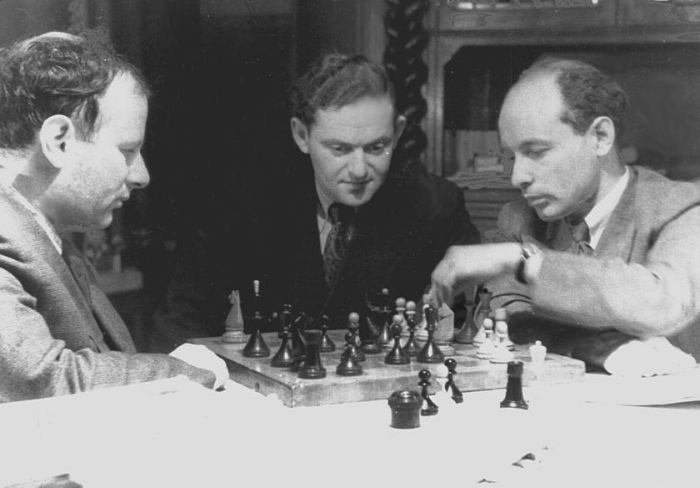
Bronstein and Boleslavsky had to play a playoff match held in Moscow in the summer of 1950. It ended in another tie, but Bronstein won the first decisive game and became the official Challenger. He drew a match with Botvinnik, who retained his title, as an equal score favoured the champion at the time.
The Memorable Second Candidates (1953)
The second Candidates stands out as one of the most famous chess tournaments ever, thanks to the timeless popularity of excellent tournament books by participants David Bronstein and Miguel Najdorf. The tournament was a massive affair – a double round-robin with 15 contestants, meaning each participant played 28 games.
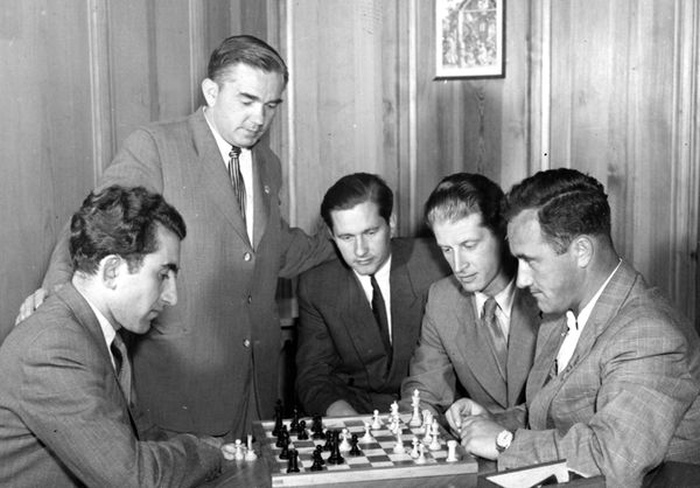
The superb lineup contributed to the rich chess heritage of this event: Smyslov, Bronstein, Keres, Reshevsky, Petrosian, Geller, Najdorf, Kotov, Taimanov, Averbakh, Boleslavsky, Szabo, Gligoric, Euwe, Stahlberg (named in order of final standings). The clear winner, Vasily Smyslov, went on to draw his first match with Botvinnik, who, therefore, retained the title.
Amsterdam 1956 and the Success of Vasily Smyslov
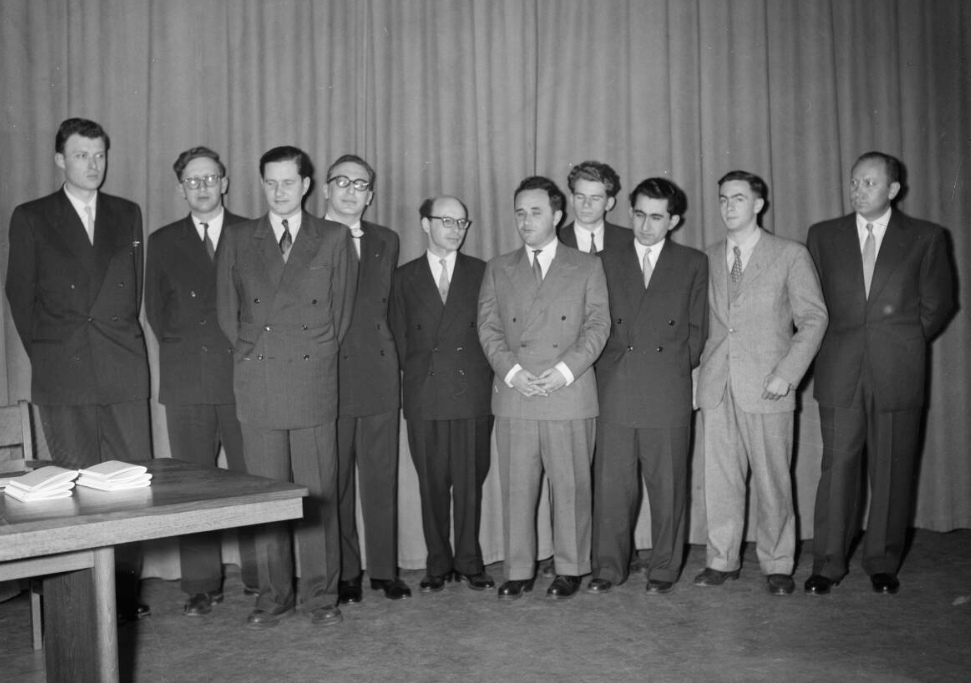 Photo: GaHetNa (Nationaal Archief NL)
Photo: GaHetNa (Nationaal Archief NL)
The 1956 Candidates Tournament in Amsterdam showcased the remarkable success of Vasily Smyslov, who secured victory for the second consecutive time. Finishing 1.5 points above the field of 10 players, he lost only one game – to 19-year-old debutant Boris Spassky. Having reached his prime form, the next year, Smyslov beat Botvinnik 12½-9½ in the match for the title and became the 7th World Chess Champion.
Yugoslavia 1959 – A Chess Odyssey
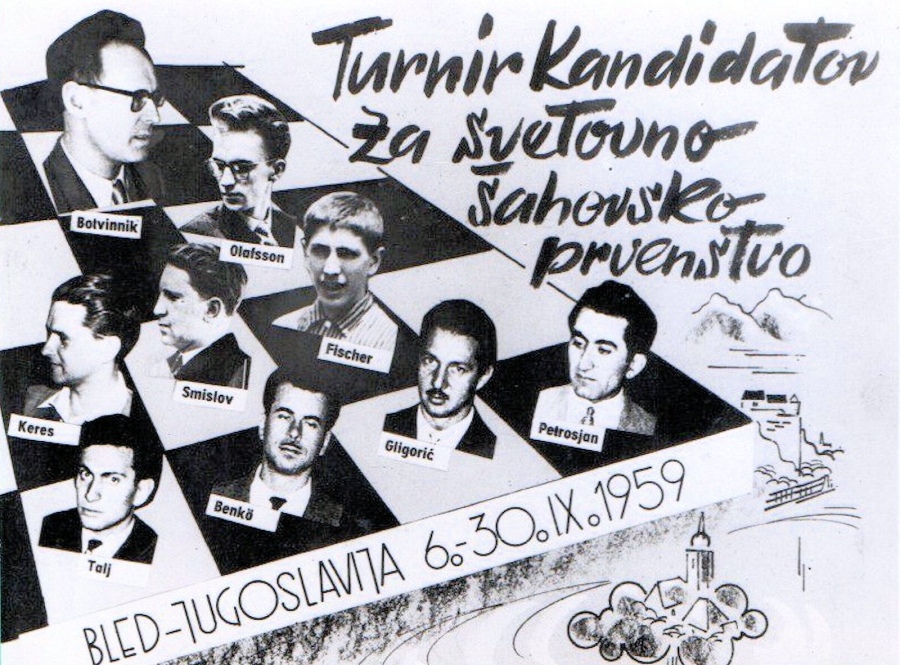
After winning the rematch against Smyslov 12½–10½ in 1958, Botvinnik was again the World Champion and awaited a new Challenger. In 1959, Yugoslavia hosted the Candidates Tournament, narrowing down to eight participants. In a quadruple round-robin, meaning each player meeting every opponent four times, 28 games were played in total. Three cities in Yugoslavia hosted the event, with the first half played in Bled and then moving to Zagreb and finally Belgrade. Despite the disastrous result against Keres (1-3), the young 22-year-old debutant Mikhail Tal swept through the rest of the field – Petrosian, Smyslov, Gligoric, the other remarkable newcomer 16-year-old Fischer, Olafsson and Benko. Half a year later, “the magician from Riga” took the title from Botvinnik, defeating the Soviet chess Patriarch 12½–8½.
Curacao 1962 – The Caribbean Challenge
And again, the World Champion was Mikhail Botvinnik. Like Smyslov, Tal held the title only for a year before handing it back to the Patriarch, who won the rematch 13-8. The next Challenger for the resilient and ever-resourceful but ageing 50-year-old Botvinnik was to be determined in the Caribbean. The eight-player quadruple round-robin format stood another test – Petrosian, Geller, Keres, Fischer, Korchnoi, Benko, Tal and Filip were to stay on the tropical island for two months.
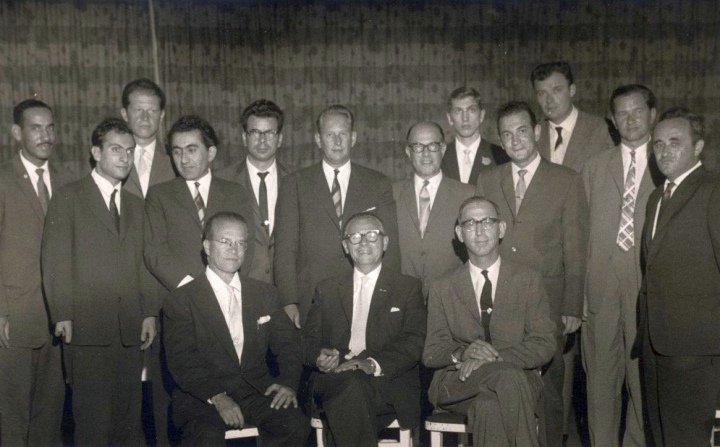
Tal’s deteriorating health did not let him finish the event, and he withdrew after 21 rounds. At the height of the Cold War, all eyes were on the performance of 19-year-old Bobby Fischer, but he was not yet ready to stand up against the Soviet chess machine, especially when its players had the benefit of making short draws between each other. Tigran Petrosian won the tournament without losing a single game and went on to become the 9th World Champion.
1965-1968 – The Era of Matches
The Candidates Matches of 1965 and 1968 were the golden era of Boris Spassky, who won both events. In their first match, Tigran Petrosian held his title by one point, 12½–11½, but in the second encounter, three years later, he was defeated by the younger opponent (Spassky was eight years his junior) 12½–10½.
1971 – Fischer’s Dominance
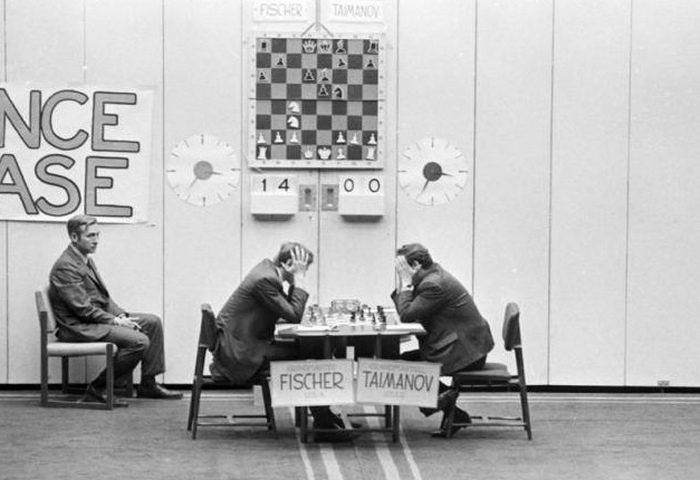
The next cycle went into the history of chess as Robert (Bobby) Fischer’s crescendo of dominant victories, culminating in the famous 1972 Reykjavik Spassky-Fischer face-off, dubbed the Match of the Century. Fischer’s remarkable victories in the Candidates matches, beating Taimanov 6–0, Larsen 6–0, and Petrosian 6½–2½, paved the way for him to face Spassky. In the World Championship Match, he dethroned Spassky with 12½–8½ and became the 11th World Chess Champion.
1977 – 1984 – Anatoly Karpov’s Era
In the decade following the Match of the Century, Anatoly Karpov gathered momentum and turned into the chess scene’s leading actor, winning the Candidate Matches 1974 and becoming the 12th World Champion following Fischer’s withdrawal. His historic battles with Victor Korchnoi, winner of the 1977-78 and 1980 Candidate Matches, and later with Garry Kasparov, winner of the 1983-84 Candidate Matches, are some of the 20th-century chess saga’s most exciting chapters.
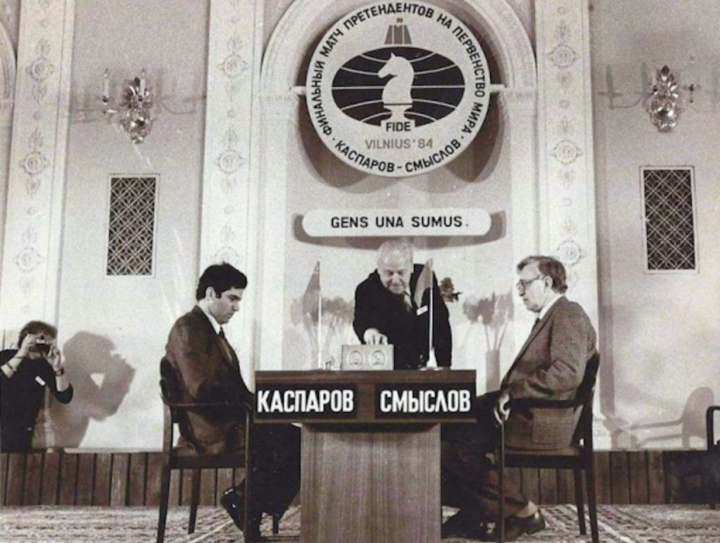
Chaos and Stability – The Candidates tournament and matches 1985-1987
The second part of the 1980s was a hot time for chess: a famous unlimited match between Karpov and Kasparov in Moscow 1984-85; its interruption; the 1985 24-game replay, in which Garry Kasparov became the 13th World Champion, followed by the 1986 rematch. This series of matches has shaken the stable world championship system. As a result, the 1987 world championship match qualification was a mixture of formats and gave serious personal preferences to Karpov. Sixteen players first played a round-robin in Montpellier in 1985, from which the top four – Yusupov, Vaganian, Sokolov and Timman – qualified for the knockout phase. They played a series of matches in 1986, and the winner, Andrei Sokolov, got to play Anatoly Karpov, seeded directly into this final match. Karpov once again became the Challenger and was one game short of winning the 1987 World Championship Match in Seville. Kasparov won the 24th game on demand, levelled the score and retained the title.
1988-1989 – Return to Matches:
For the next cycle, the Candidates phase came back to matches, but this time with 14 players, whom Karpov joined in the quarterfinals. He again proceeded to win the event and played his fifth match against Kasparov in New York/Lyon in 1990, losing 11½–12½.
1991 – The Split
The 1991 Candidates Matches kept the same format as three years before – half of the 14 players were eliminated before Karpov joined in the quarterfinals. In the final, held in 1993, Nigel Short beat Jan Timman. Amid the disagreements on the organisational side of the World Championship Match, the incumbent World Champion Garry Kasparov and the Challenger Nigel Short diverged from FIDE. They played their match under the auspices of the freshly created Professional Chess Association (PCA). In response, FIDE stripped Kasparov of his title, temporarily removed Kasparov and Short from the FIDE rating list, and held a match between Anatoly Karpov and the Candidates’ runner-up Jan Timman. Kasparov defeated Short, and Karpov beat Timman to trigger a split in the chess world that was finally resolved only 13 years later, in 2006, with the reunification match between Vladimir Kramnik and 2005 FIDE World Champion Veselin Topalov. In the years of the split, FIDE held five knockout championships. The Candidates were put on a halt.
2007 – The Reunification
After the reunification, the knockout FIDE World Cup and the FIDE Grand Prix Series were introduced as qualification paths for the Candidates. In 2007, the World Championship was held in the form of an eight-player double round-robin tournament in Mexico City. The Candidates Matches, which happened three months earlier, determined four out of eight participants: Levon Aronian, Boris Gelfand, Alexander Grischuk, and Peter Leko.
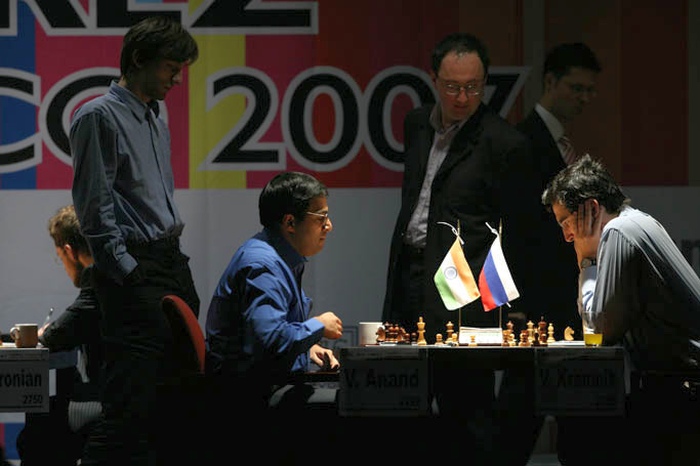
They were joined by those seeded directly into the Championship Tournament: Viswanathan Anand, Peter Svidler, Alexander Morozevich (they finished 2nd–4th in San Luis 2005, where Veselin Topalov became the FIDE World Champion), and the winner of the reunification match Vladimir Kramnik. “The Tiger of Madras”, Anand, triumphed, scoring 9 out of 14, and became the World Champion. A year later, he defended his title in the rematch against Kramnik.
2009 – Topalov’s Moment
The next cycle had only one Candidates Match between the knockout 2007 World Cup winner, Gata Kamsky, and 2005 FIDE World Champion, Veselin Topalov, who was compensated for missing the 2007 World Championship Tournament.
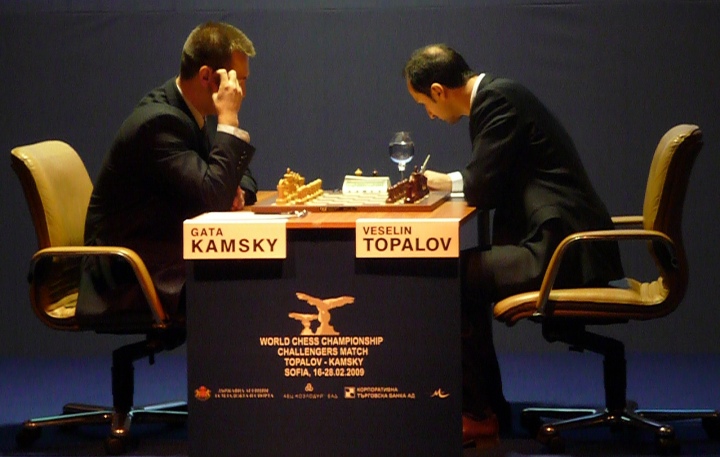
Topalov won 4½-2½ and became the Challenger. The World Championship match between Anand and Topalov took place in Sofia, Bulgaria’s capital, in 2010. Anand won the final game to win the match by 6½–5½ and retain the title
2011 – Boris Gelfand Emerges on Top
After years of disarray, the World Championship Cycle stabilised again. In 2011, the Candidates Matches were held in Kazan, Russia, with eight players taking part. Levon Aronian and Teimour Rajdabov qualified from FIDE Grand Prix, Magnus Carlsen (replaced by Alexander Grischuk) and Vladimir Kramnik by rating, Boris Gelfand as the winner of the World Cup, Shakhriyar Mamedyarov got the wild card. They were joined by Gata Kamsky (runner-up of the 2009 Challengers Match) and Veselin Topalov (runner-up of the 2010 World Championship Match). The 42-year-old Boris Gelfand consecutively defeated Mamedyarov 2½–1½, Kamsky in the blitz playoff, and Grischuk in the final 3½–2½ to become the Challenger for the first time in his career. The match with defending champion Anand finished at 6–6, but Gelfand lost the rapid tiebreak by 2½–1½.
London 2013 – The Return of the Tournament Format
Fifty-one years after Curaçao, the Candidates Tournament was back. Eight players, the heirs of the legendary generations before them, gathered in London to follow in the footsteps of Spassky, Tal, and Fischer, albeit in the truncated double round-robin format – the increasingly hurrying world could hardly handle the gigantic quadruple tournaments of the past.
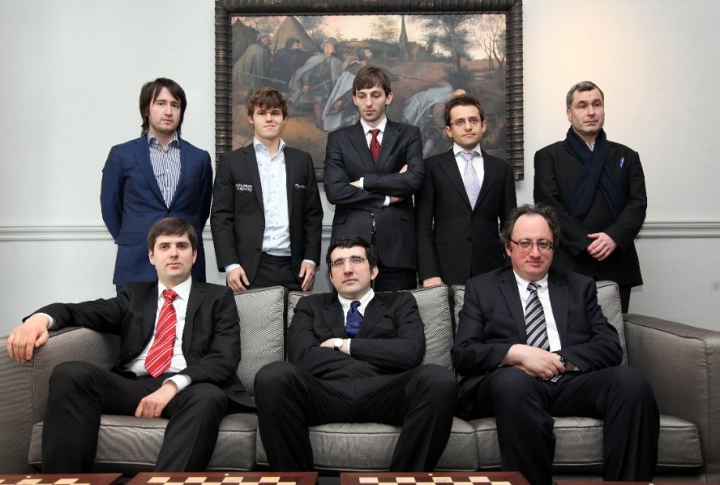
The lineup – hardly a surprise for a tournament of such calibre – boasted of big names: Peter Svidler, Alexander Grischuk, Vasily Ivanchuk, Boris Gelfand, Magnus Carlsen, Levon Aronian, Vladimir Kramnik, and Teimour Radjabov. The event went down in history as one with an unusual and dramatic finish. Both leaders, Magnus Carlsen and Vladimir Kramnik, lost their last-round games, and the 22-year-old Norwegian came out on top due to the greater number of wins, the second tiebreak criterion. In November of the same year, it took Magnus Carlsen just ten games to win the match with Viswanathan Anand in Chennai and become the World Champion.
Khanty-Mansiysk 2014 – The Return of Vishy Anand
India’s first grandmaster, the only player to win the FIDE World Championship in three different formats (knockout, tournament, match), Viswanathan Anand, had lost his crown just three months earlier. “Former players and media had given me poor odds at the start of the tournament,” wrote Anand in his 2019 autobiography Mind Master. “In fact, I’d predicted last place for myself and had been thinking up ways to feel less miserable. But here I was, staring at another World Championship match in seven months’ time.”
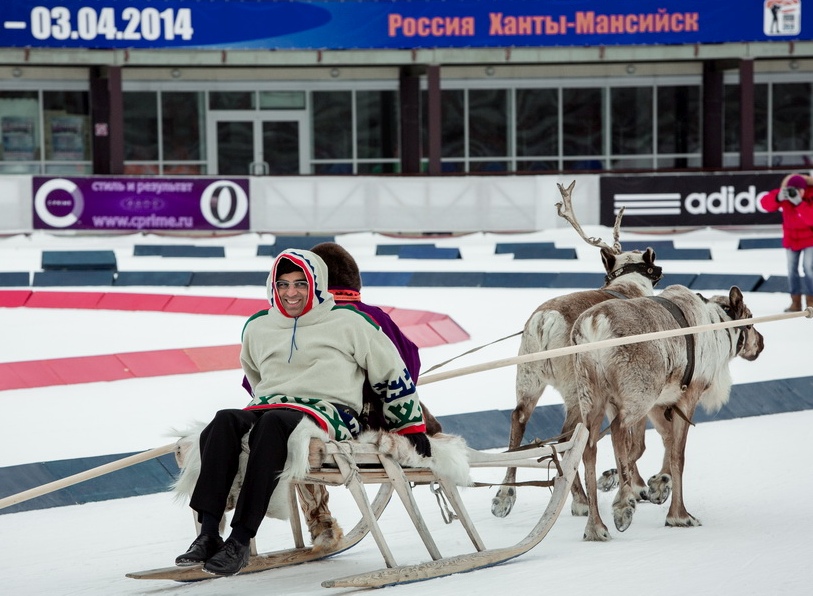
The legendary champion won three games – against Levon Aronian, Shakhriyar Mamedyarov and, the prettiest of all, Veselin Topalov – and drew both games versus Sergey Karjakin, Vladimir Kramnik, Dmitry Andreikin, and Peter Svidler to claim the victory with one round to spare, scoring 8½ out of 14 undefeated. The World Championship Match, which essentially became a rematch against Carlsen, was also held in Russia, only in its much warmer part – in Sochi. Carlsen retained the title by 6½–4½.
Moscow 2016 – The Quest to Return the Crown to Russia
The 2016 Candidates Tournament, held in the heart of the Russian capital, brought together Veselin Topalov, Vishy Anand, Levon Aronian, Sergey Karjakin, Peter Svidler, Fabiano Caruana, Hikaru Nakamura, and Anish Giri – for the last three, it was their debut at the Candidates.
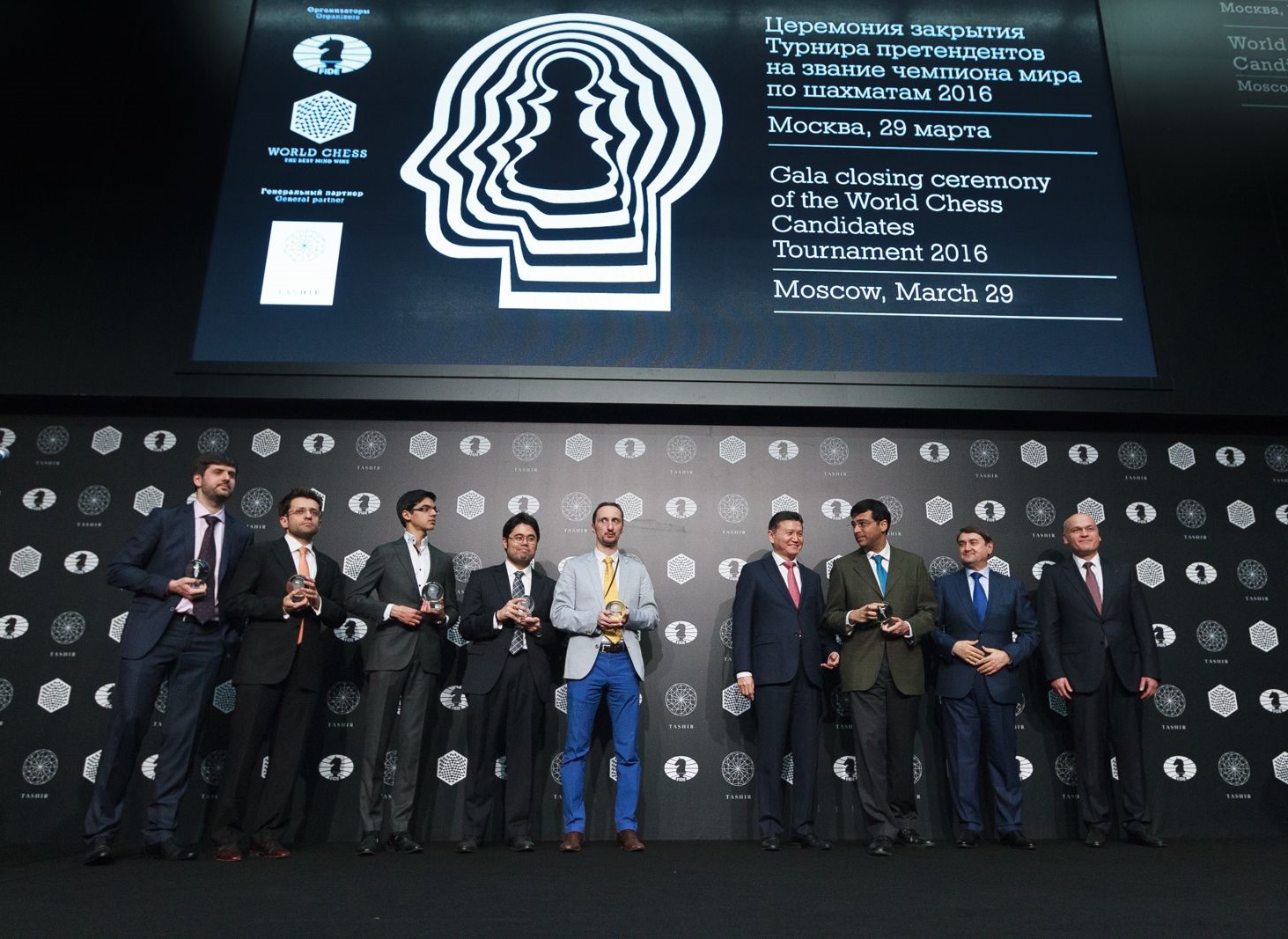 Photo: World Chess
Photo: World Chess
Karjakin emerged as the clear winner, losing only one game to Anand and winning four, sealing the deal with a last-round victory against Caruana. Half a year later, in New York, Karjakin’s team engaged in a widely advertised quest to “return the crown to Russia”, but, despite Karjakin being the first to score, Carlsen bounced back, stood his ground and won the rapid tiebreak.
Berlin 2018 – A New American Hope
After the World Rapid and Blitz Championships, held in Berlin three years earlier, chess returned to the German capital with the most important tournament of the year, this time starring Sergey Karjakin, Levon Aronian, Ding Liren, Shakhriyar Mamedyarov, Alexander Grischuk, Fabiano Caruana, Wesley So, and Vladimir Kramnik. Only Ding and So did not have prior Candidates experience. For Kramnik, this was his fourth and – as it turned out – last Candidates Tournament, as a year later, he announced his retirement from classical chess.
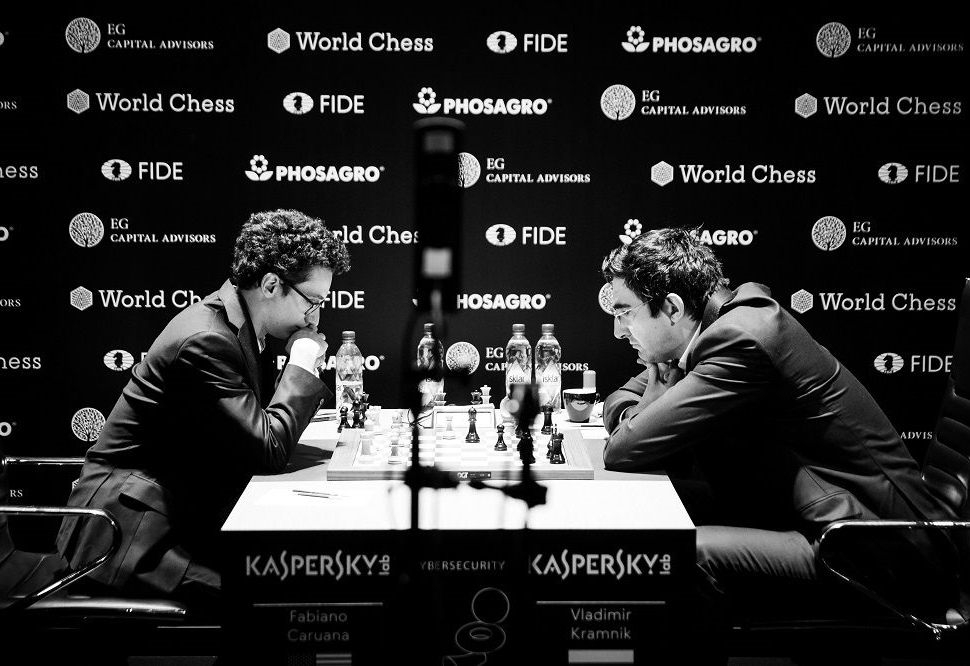 Photo: World Chess
Photo: World Chess
One of the initial favourites, 25-year-old Fabiano Caruana, started with victories in the first and fourth rounds, nonetheless breaking away from pursuers only towards the end of the tournament and securing his success with a last-round victory, bringing new hope for the US that after Bobby Fischer they will once again have a World Champion. In Berlin, Caruana picked up 20 rating points and climbed to the second spot in the world – he’d hold this position from May 2018 to October 2021 before clinching it again at the start of 2024! The ensuing World Championship Match in London was one of the closest in history, with all twelve classical games ending in draws before Carlsen clinched the title in the rapid tiebreak.
Yekaterinburg 2021 – The Coronavirus Candidates
It took more than a year for eight grandmasters to figure out the next contender for the world title. Split in half, this tournament became the longest-running sports event in history starting in March 2020 and ending in April 2021. Apart from Fabiano Caruana, Alexander Grischuk, Ian Nepomniachtchi, Ding Liren, Wang Hao, Anish Giri, Kirill Alekseenko, and Maxime Vachier-Lagrave, one more mighty player by the name of Novel Coronavirus, pitched in. Before the start, Russia, and Yekaterinburg in particular, had registered only a handful of Covid-19 cases. Teimour Radjabov, who withdrew amid pandemic concerns, was replaced by Vachier-Lagrave, and the tournament began with a number of medical precautions in place.
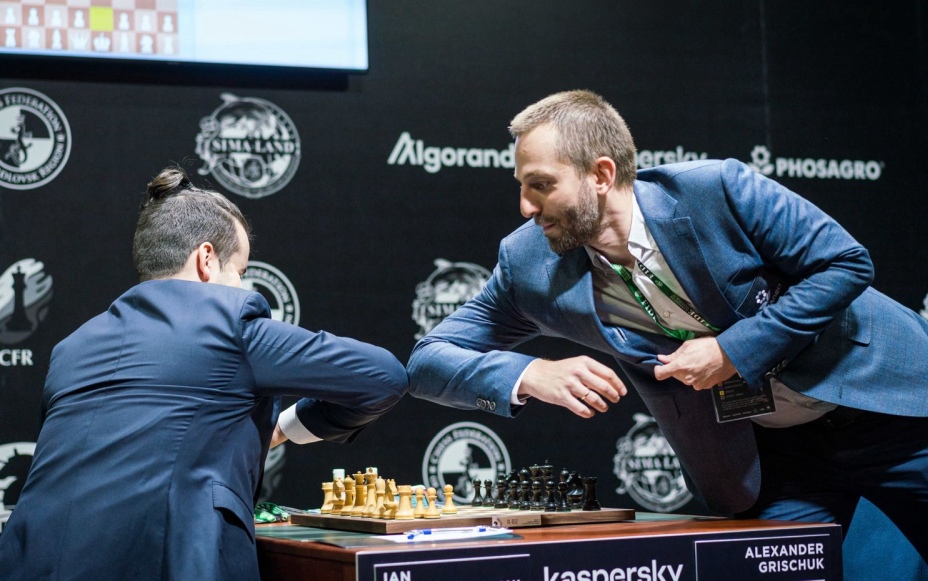 Photo: Lennart Ootes
Photo: Lennart Ootes
The players finished the first half of the tournament, Vachier-Lagrave and Nepomniachtchi finding themselves in the lead when the Russian government announced that it was shutting down air traffic with other countries. The tournament had to be stopped, and the players were urgently evacuated. FIDE made a few attempts to resume the event. In the end, it wouldn’t be until 13 months later that the players returned to Yekaterinburg. In the second half, the world’s #4 Ian Nepomniachtchi won two more games and claimed first place with a round to spare. Despite the promising start, he lost the World Championship Match in Dubai by 7½–3½, Carlsen defending his title for the fourth time.
Madrid 2022 – The Second Coming of Ian Nepomniachtchi
This event stood out because the second place mattered almost equally as the first. Magnus Carlsen hinted (which he later confirmed) that he would not be defending the World Championship crown. Eight top Grandmasters played 56 games in the grand Palacio de Santona venue in Madrid. The tournament concluded with a firm, convincing victory by Ian Nepomniachtchi, securing 9.5/14.
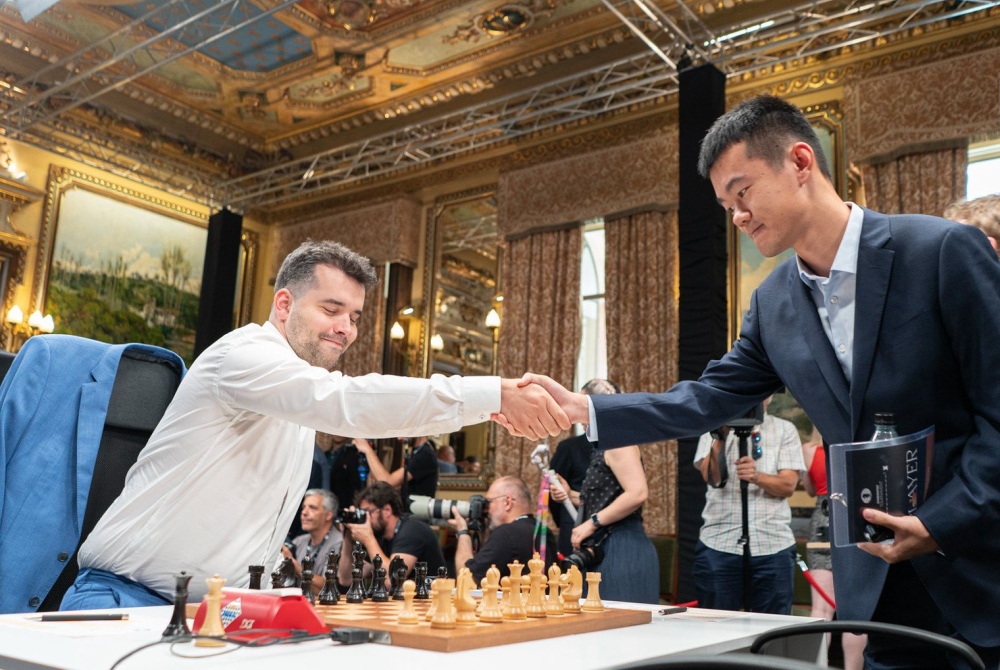 Photo: Maria Emelianova
Photo: Maria Emelianova
Nepomniachtchi took an early lead and maintained it convincingly until the very end, winning with a round to spare, similar to his performance in Yekaterinburg in 2021. Hikaru Nakamura narrowly missed out on second place. Instead, Ding Liren, who started the tournament with a crushing loss to Nepomniachtchi and then had a streak of seven draws before bouncing back in the second half, clinched the runner-up position. This achievement eventually led him to the match for the world chess crown. In the 2023 match between Nepomniachtchi and Ding, the Chinese player emerged victorious.
Toronto 2024 – A New Chapter
A new chapter of the Candidates tournament will be written in Toronto this April. Not only will this event mark the inaugural occasion of the women’s Candidates taking place alongside the Open category, but it will also be the first time the tournament finds its home in North America.







